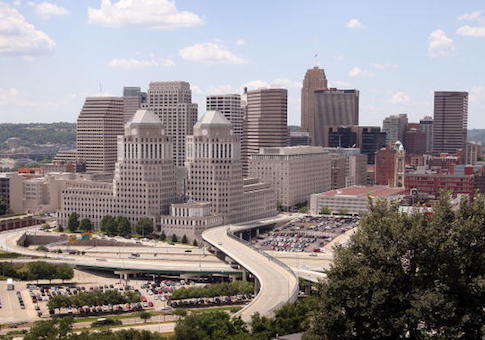The day Cincinnati soccer fans have been waiting for is here, with Major League Soccer announcing that Futbol Club Cincinnati will be joining the league as its latest expansion franchise.
But as fans celebrate, opponents of the proposed 21,000-seat MLS stadium continue to gather signatures in a bid to put the project before city voters – something city officials have rejected because the City Council approved the stadium project as an emergency measure. The city needs to stimulate economic growth at the stadium’s proposed West End location as soon as possible, the council ordinance states.
Critics don’t like the idea of using $33 million in taxpayer money to fund infrastructure improvements that would be required. The city should focus its resources on core public services instead, they say.
"The biggest problem is this is not something government has to do," Greg Lawson, a research fellow at the Buckeye Institute, told Watchdog.org. Paul Brown Stadium, home of the Cincinnati Bengals, was also not a good deal for taxpayers, he said.
The Buckeye Institute called the state’s approval of $4 million for the soccer stadium project one of the 10 worst capital budget requests of 2018.
"If you’re going to do it, it should have been all local money," Lawson said, adding that public safety, schools and sewer upgrades should have a greater priority than a soccer stadium.
Using public funds for infrastructure to support the stadium is a form of corporate welfare, he said. The stadium is unlikely to benefit the region more than other kinds of economic development projects would have done, according to Lawson.
"All the time, you’re seeing teams leaving cities," he said, noting that sports team owners have blackmailed cities by threatening to leave.
City officials did not respond to requests for comment about the stadium project, but one of the project’s supporters, Councilman P.G. Sittenfeld, posted on his Facebook page a number benefits that he helped to negotiate with FC Cincinnati. Sittenfeld said the benefits include:
- $25 million over the life of the agreement for Cincinnati Public Schools.
- $32 million in funds that will go to minority businesses.
- $22 million for companies owned by women.
- $16 million in added pay for workers since the project will be carried out under a prevailing wage law.
- $15 million for affordable housing.
- $100,000 annually for West End community groups to engage in such things as youth sports and other types of recreation.
But opponents such as attorney Timothy Mara, who lives three blocks from the stadium site, say research has shown that the benefits of sports stadiums are often disappointing.
"There is a lot of literature on the lack of economic impact that sports stadiums have on cities …" Mara told Watchdog.org. "The primary beneficiaries are the really, really wealthy sports team owners."
Stadiums typically bring in low-wage jobs, such as hotdog vendors and parking attendants, he said, adding that stadiums are a poor choice if the goal is stimulating the local economy. If it has such a great financial payoff, why do teams need public subsidies, Mara asks.
Building a stadium will also make the area’s current on-street parking problems even worse, Mara said. Local businesses depend on that parking for their customers, and stadium-goers would compete for that space, he said.
Mara supports the right of citizens to petition to put the project on the ballot, even though the ordinance was presented on the assumption that it needed to be approved quickly so that FC Cincinnati could move forward on its MLS bid.
"They pass everything under the sun as an emergency measure," he said. "They know as well as we do there is no emergency at all."
The state also stands to lose out on sales tax revenue it would otherwise have received because the stadium will be owned by the Greater Cincinnati Redevelopment Authority, which would lease it back to the team, Mara said. The authority is exempt from paying sales taxes on building materials, he said.
Overall, what’s been promised in the project’s Community Benefits Agreement is superficial, according to Mara, who said the community needs job training more than it does funds for youth sports.
"They don’t get at the core problems of the community, which are poverty and lack of skills and so on," he said.
The group Coalition Against an FC Cincinnati Stadium in the West End has expressed similar concerns on its Facebook page, arguing that homelessness among children and other community members should take priority.
"It is wrong to invest funds in luxury while so many in our city are living without access to the needs of basic survival," one of the group’s posts says. "It is wrong to subsidize the wallets of billionaires."
A recent study by the Mercatus Center at George Mason University concluded there’s not much evidence that professional sports stadiums deliver much in the way of economic gains for communities – and the authors said cities have more lucrative economic development options.
But FC Cincinnati’s spokeswoman, Anne Sesler, disputes that.
"The FCC stadium will be privately funded – not with public dollars, which is what most studies look at," Sesler told Watchdog.org in an email.
